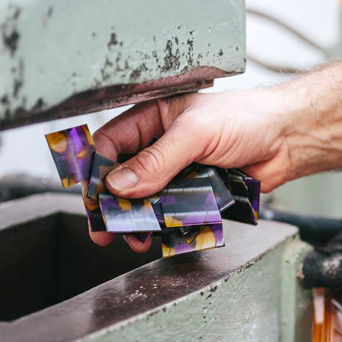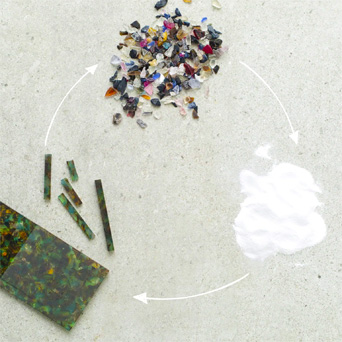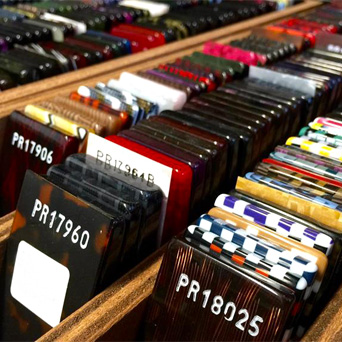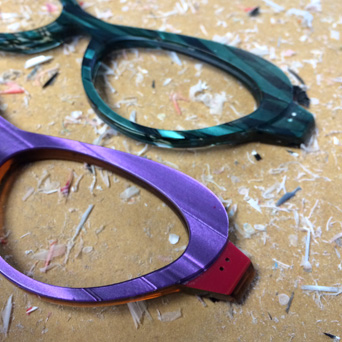HIGH DEFINITION VISION
Cellulose acetate
This material of choice for the manufacturing of high-end eyewear was created in 1865. Used, among other things, as a substitute for tortoiseshell or buffalo horn, this elegant polymer is mainly made up of natural fibers from wood or cotton, enriched with 25% plasticizer.
Soaked in acetone, its various components are dissolved and blended. Following filtration and the addition of pigments, the cellulose acetate is molded into 8 mm thick plates. These are then dried for several months, or even several years for premium acetates, such as Japanese acetate.
Recently, new types of more eco-friendly acetate have emerged, incorporating natural origin binders. Some even come from the recycling of industrial acetate residues.
The cellulose acetate frames are not molded but are crafted with artisanal care: acetate plates are cut, then machined precisely, almost sculpted, before being filed to achieve the shape desired by the designer. The process concludes with meticulous polishing that enhances the depth and sheen characteristic of acetate.
We invite you to come and appreciate the superior quality and refined aesthetics of our premium acetate eyewear collections at your Opticien Platinum shops.




